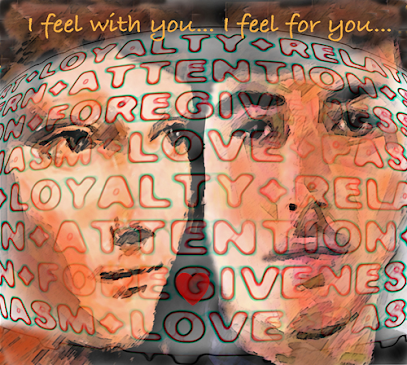The Republic by Plato
The Athenian philosopher conventionally known as Plato (428–347 BCE) entered history under his given name, Aristocles, and initially distinguished himself not in speculative dialectic but in the palaestra. As a formidable wrestler—victor at the Isthmian Games—he developed an ascetic reverence for orthodox grappling, extolling “the legitimate manoeuvres of regular wrestling” (Laws 281) and repudiating the nascent theatrics of contrived spectacle. In later retrospection, he dismissed innovations such as “boxing devices” as bereft of utility and unworthy of serious description. Renowned for the breadth of his shoulders, he acquired the sobriquet Platon—from platys (“broad”)—a name by which the world would forever after identify him.
Born into an aristocratic lineage, Plato initially aspired to the tragic stage, composing poetry before his philosophical vocation took precedence. However, his fidelity to his mentor Socrates, who had been lampooned in Aristophanes’ Clouds as an absurd, flatulent buffoon, engendered an enduring antipathy toward the comic and dramatic arts. In Politeia (The Republic), he advocates the expulsion of most poetic forms from the ideal state, permitting solely hymns to the gods (607a). Accounts such as Diogenes Laertius’ Lives of Eminent Philosophers attest that he eventually consigned his own verses to the flames—an act emblematic of his philosophical purism. The Greek title Politeia, more prosaically “the rights and conditions of citizenship” (akin to the Roman civitas), was rendered as The Republic by Cicero, thereby shaping its enduring reception across antiquity and modernity.
Composed during his ‘middle period’ after the institution of the Academy, The Republic traverses ethics, metaphysics, and epistemology beneath the ostensible rubric of political theory. Socrates’ analogy of the polis as the soul writ large predicates civic excellence (aretê) on the harmonious functioning of its constituent parts, just as the rational faculty (logistikon) should govern the spirited (thymoeides) and the appetitive (epithymetikon) elements within the psyche. This tripartition maps onto the philosopher-kings, the martial guardians, and the mass of desire-driven producers in the ideal kallipolis. In a move both prescriptive and paternalistic, the rulers preserve civic order through the administration of salutary falsehoods—pharmaka—even as they advance the radical proposition that public office should be determined by aptitude and not by sex (455d).
Situated at the ontological heart of The Republic is Plato’s Theory of Forms (eide), whereby all sensibles are imperfect instantiations of immutable and transcendent archetypes. This metaphysical schema undergirds both the celebrated Allegory of the Cave (514a–517a), in which prisoners mistake shadows for reality, and the divided line analogy (509d–511e), which stratifies cognition from mere image-recognition up to intellectual apprehension of the Forms themselves. The charioteer metaphor, earlier outlined in the Phaedrus, finds elaboration here in political analogy. Modern scientific luminaries such as Werner Heisenberg have echoed Platonic realism, asserting that the elementary constituents of matter resemble formal structures rather than tangible objects—an unexpected resonance between quantum theory and ancient metaphysics.
At its thematic core, The Republic seeks to elucidate the nature of justice—initially positing it as an intrinsic good (358a), later entwining it with posthumous recompense. Yet it is Plato’s political typology and critique of democratic decay that remain prescient. He envisages democracy succumbing to tyranny when a populace, animated by ressentiment toward perceived injustices, elevates a demagogue who dispenses largesse to partisans while consolidating personal dominion (565b–569a). Such a figure, once unmasked as a tyrant, will extinguish dissent and transmute liberty into the “harshest and bitterest of all slaveries.” The acuity of this analysis ensures The Republic’s perpetual prominence in curricula and scholarly debate, exemplifying Whitehead’s dictum that European philosophy is, in essence, “a series of footnotes to Plato.”
WORDS TO BE NOTED -
-
Palaestra – ancient Greek wrestling school
-
Ascetic – strict or self‑disciplined lifestyle
-
Repudiating – rejecting strongly
-
Sobriquet – an informal name or nickname
-
Lampooned – mocked publicly
-
Antipathy – strong dislike
-
Purism – insistence on strict rules or standards
-
Prosaically – plainly, without elegance
-
Tripartition – division into three parts
-
Paternalistic – controlling people as a parent controls a child
-
Ontological – relating to the nature of being
-
Instantiations – examples of something in reality
-
Archetypes – perfect or original models
-
Ressentiment – deep resentment and hostility
-
Dominion – power or control
Plato, born Aristocles in Athens (428–347 BCE), was first a champion wrestler before becoming one of history’s greatest philosophers. His broad shoulders earned him the nickname “Plato.” Initially drawn to writing plays, he abandoned poetry, partly because comedians of his time mocked his mentor Socrates. His most famous work, The Republic (Politeia), explores justice, politics, and truth. Plato describes society as similar to the human soul, with three parts—reason, spirit, and desire—mirrored in rulers, soldiers, and workers. He believed leaders should sometimes use “noble lies” for social stability and that men and women could govern equally. Central to his thought is the Theory of Forms, the idea that what we see are imperfect copies of perfect ideals. Politically, he warned that democracy can decay into tyranny when angry citizens elevate a charismatic demagogue, only to lose their freedom. His ideas remain deeply influential even today.
SOURCE- PHILOSOPHY NOW
WORDS COUNT- 500
F.K SCORE- 14




Comments
Post a Comment